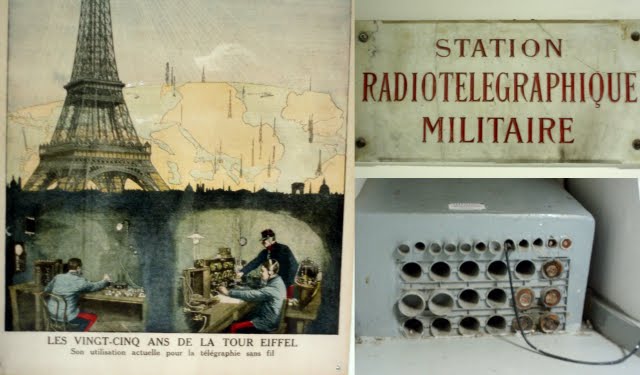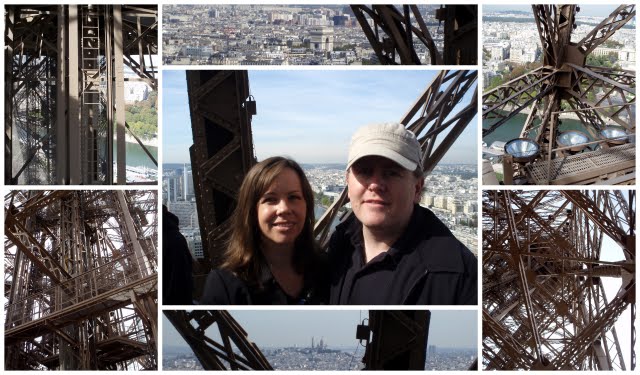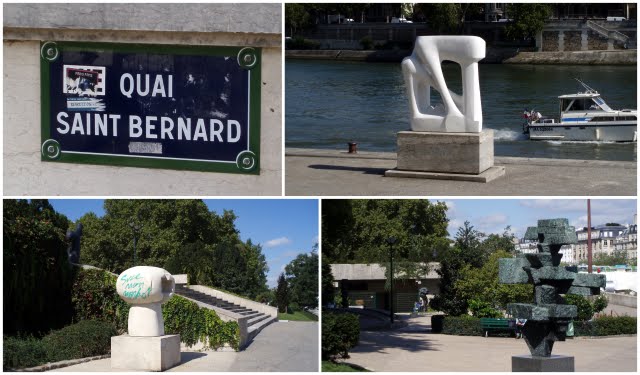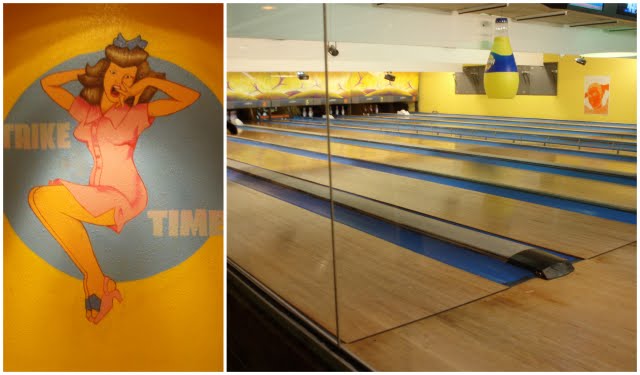Our tour guide, Aurora, was animated and informative as she described the history of the tower. Contrary to popular belief Eiffel did not design the tower all by himself. A team of engineers from his firm did the designing, including architect Stephen Sauvestre and structural engineers Maurice Koechlin and Emile Nouguier. But Eiffel made sure to keep 99% ownership. Upon his death, ownership of the tower passed to his family, but the city of Paris eventually purchased it from them. Currently, the city leases operations to a private company and they split the ticket receipts 50-50.
Aurora walked us over to what appeared to be a maintenance shed near the tower. It was the entrance to an underground military communications bunker that sits directly below the Champ de Mars and runs from the tower to the École Militaire at the other end.
Did you know that they originally intended to take the tower down after the 1889 World's Fair? Eiffel saved it by obtaining permission to conduct scientific experiments at the summit. Near the beginning of WWI, the military began using it as an antenna for the wireless telegraph which put an end to any discussion of taking down the tower.
 |
| Poster advertising use of the wireless telegraph; below right: original telegraph lines used (they have since been cut). |
After exiting the bunker, we got in line at the tower's east pillar. It is the only pillar that still uses one of the original elevators.
Before getting on the elevator Aurora took us below, to the inner workings of the elevator. It was a very technologically advanced piece of machinery for 1889. A hydraulic piston drives a series of Otis-designed pulleys to raise the elevators upwards and sideways to the 2nd floor.
The diagram does a good job of explaining how it works, but it was also very cool to see the equipment in action. Aurora noted that because the equipment dates to the 1880's, modern lubricants can't be used. They lubricate the cables with pork fat; other parts are lubricated with bull and sheep fat.
 |
| The white stuff underneath the piston on the left is animal fat. Yuck. |
The "Behind the Scenes Tour" stops on the 2nd platform. But our "behind the scenes" access allowed us to climb some steps to the roof of the Jules Verne restaurant, and check out the views from there. The Trocadéro, across the river (with La Défense behind)...
And of course the view of the Champ de Mars with the École Militaire and the Tour Montparnasse.
...and of the tower's shadow across the Pont d'Iéna.
We also spotted the lights that make the tower sparkle at night as well as the upper pulleys for the elevators.
The tour ended on the second floor. From there we had the option to purchase elevator tickets to the top for 5 euros, but the line was already more than 40 minutes wait time. Instead we spent a few more minutes enjoying the view, then hiked down the stairs to the first platform and had lunch.
We were quite glad to have taken the tour. Not only was it a great explanation of the inner workings of the tower, but it allowed us to skip the ground floor queues for the elevators and stairs!













